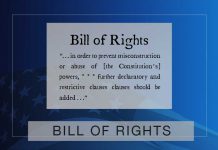Last Updated on August 20, 2022 by Constitutional Militia
2nd Amendment: “Arms”
Because “the right of the people to keep and bear Arms” must conduce at least to the maintenance of “[a] well regulated Militia”, the people must possess “Arms” suited, not simply for individual self-defense, let alone for so-called “sporting purposes”, but preëminently for the serious work of community self-preservation against every enemy, domestic as well as foreign, from private criminals to rogue public officials to invading armies—and therefore must possess “Arms” at least as good for military purposes as the “Arms” carried by equivalent troops in this country’s regular Armed Forces.
“Arms” and the Second Amendment
The particular “Arms” that WE THE PEOPLE had in mind in the late 1700s were the “Arms” of a then-contemporary member of the Militia familiar in their own personal experiences. Thus, in its first Militia Act, Congress required that
“every citizen * * * enrolled [in the Militia] * * * shall * * * provide himself with a good musket or firelock, a sufficient bayonet * * * , two spare flints, and * * * a pouch with a box therein to contain not less than twenty-four cartridges, suited to the bore of his musket or firelock, each cartridge to contain a proper quantity of powder and ball; or with a good rifle, * * * shot-pouch and powder-horn, twenty balls suited to the bore of his rifle, and a quarter pound of powder”.[1]
Almost a century later, Congress reaffirmed those requirements.[2] Nonetheless, THE PEOPLE could never have originally intended that only the particular types of “Arms” with which individuals could provide themselves in the late 1700s and 1800s would always uniquely define and delimit “the right of the people to keep and bear Arms”, no matter what improvements in firearms supervened over the years. Even Congress did not believe that, because in 1874 it appropriated moneys “to be paid out * * * for the purpose of providing arms * * * for the whole body of the militia, either by purchase or manufacture”;[3] and in 1887 and 1900 it provided that “the purchase or manufacture of arms * * * for the militia * * * shall be made * * * as such arms * * * are now manufactured or otherwise provided for the use of the Regular Army”[4]—which enabled the Militia to be provided with up-to-date arms at public expense. So the noun “Arms” must be construed in a generic—and therefore expandable, “living”—sense, in terms of what equipment, at a particular time and in a particular place, will enable a “Militia” to be sufficiently “well regulated” that it can effectively provide “the security of a free State”.[5]
The noun “Arms” must be construed in a generic—and therefore expandable, “living”—sense, in terms of what equipment, at a particular time and in a particular place, will enable a “Militia” to be sufficiently “well regulated” that it can effectively provide “the security of a free State” (2nd Amendment).[6]
“The character, quality, and even quantity of “Arms” that come within “the right of the people to keep and bear” for the purpose of being able to serve in “well regulated Militia” self-evidently depend upon the technology of the period in question.”[7]





























